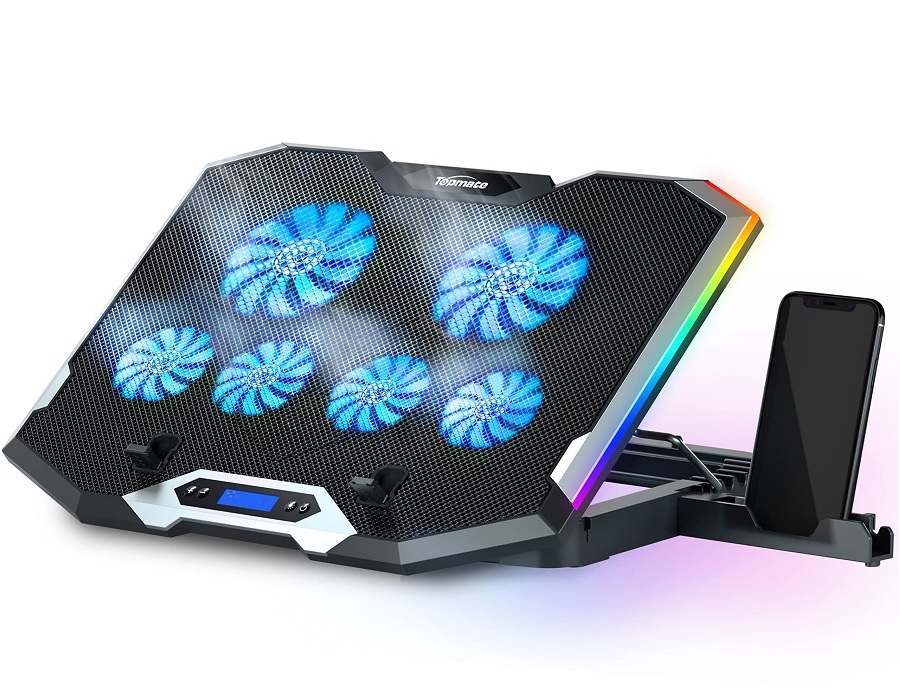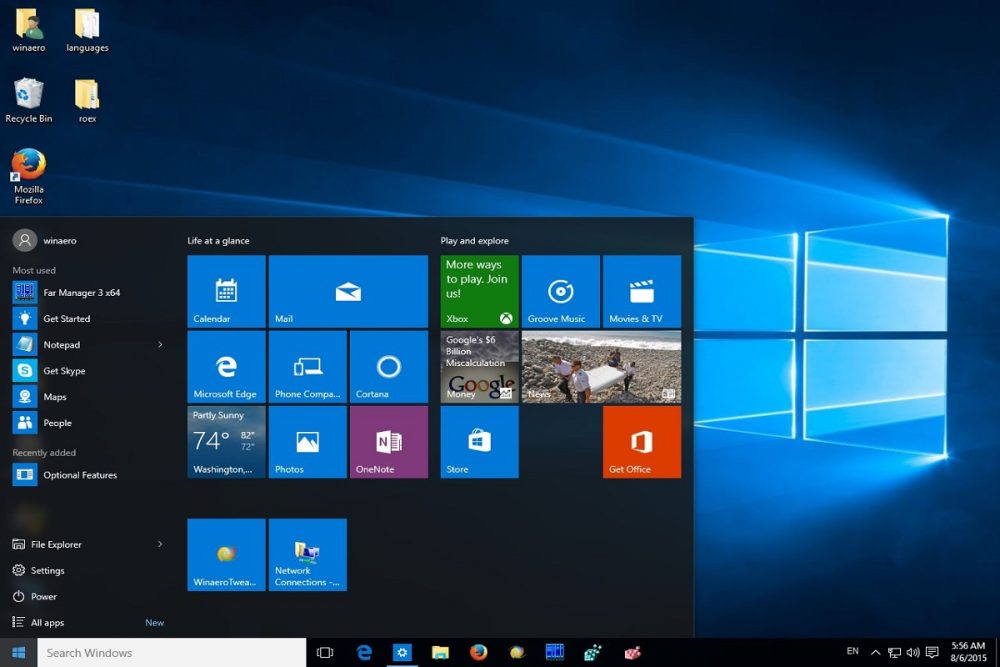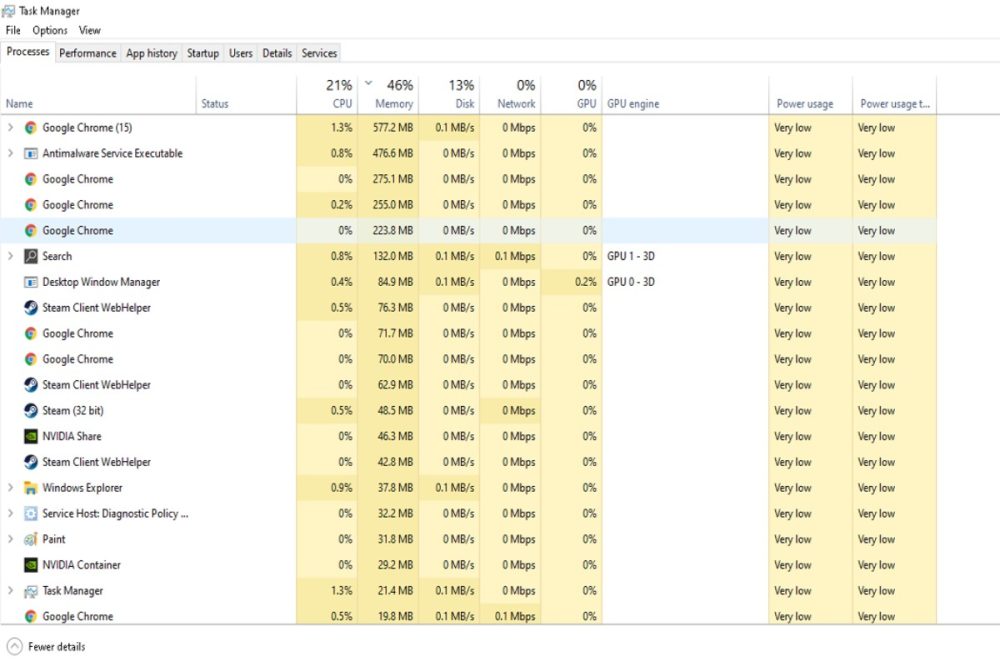
When you use a laptop continuously for an extended period, it tends to experience overheating, which can reduce its lifespan. To address this issue, you need to equip yourself with some quick and effective cooling methods so that your laptop can operate more durably over an extended period. Let’s learn about some simple yet effective ways to cool off a laptop!
Table of Contents
Place the laptop in a cool and well-ventilated area

One of the simple yet extremely effective ways to cool the laptop is by positioning it in a cool place. Specifically, you can use laptop accessories like a stand to enhance the machine’s cooling performance.
Additionally, avoid placing the laptop on glass surfaces, pillows, cushions, or blankets, as they can increase the device’s temperature, preventing proper airflow through the ventilation holes.
Regularly clean your laptop

Regularly clean your laptop after extended use to minimize dust accumulation in the cooling vents. When performing a comprehensive cleaning, you should have basic knowledge of disassembling the laptop to avoid causing damage to certain components. If you lack repair or disassembly skills, it is advisable to visit authorized service centers to ensure the safety and cleanliness of your machine. This way, your laptop is guaranteed to operate more efficiently and smoothly.
Apply thermal paste to the CPU

If you have knowledge and experience in laptop repair and installation, you can use the method of applying thermal paste to the CPU. This is a commonly used technique among those experienced in laptop assembly.
Simply clean and dry the CPU with alcohol, then apply the thermal paste evenly on the CPU surface. However, it’s essential to note that users should only use an appropriate amount of paste, not too much or too little, to avoid wastage or inefficiency.
It’s not advisable to apply thermal paste to the CPU without experience, as it may damage internal components, causing shorts and circuit malfunctions. You can seek assistance and guidance from professional laptop repair centers for a safe and effective application.
Use a cooling pad

If the laptop’s cooling system is not powerful enough to dissipate heat when the temperature rises too high, you can use an additional cooling pad to regulate the airflow and expel heat from the computer case more efficiently. The cooling pad provides high efficiency during use and does not compromise the system’s overall performance.
However, the drawback lies in the relatively large size of the cooling pad, making it impractical for carrying during work or travel. Additionally, using it through a USB port may also contribute to some battery consumption of the device.
Avoid charging and using simultaneously
The habit of using the laptop while it’s plugged in, which may stem from the nature of work requiring continuous laptop usage, not only reduces the battery lifespan but also contributes to abnormal heating issues for your laptop. Therefore, when not essential, it’s advisable to leave the device unplugged. Additionally, limiting the practice of charging and using simultaneously helps avoid temperature increases and maintains the device’s operational efficiency.
Turn off the laptop when not in use
In addition to the habit of charging and using simultaneously, users often tend to leave the laptop in Sleep mode. This will cause the laptop to heat up and adversely affect its operational capabilities. It’s recommended to shut down the laptop when not in use by using the Shut Down button. Additionally, to help keep the laptop cool, users should avoid having multiple tabs or unnecessary applications open to prevent the CPU from running excessive programs.
Utilize the Power Options feature on Windows

To address the laptop’s cooling issue, users can proactively intervene in Windows by reducing the processor speed in the power options settings to help the device operate cooler. Most modern laptops come with high configurations, and rarely do you fully utilize the processing power of the CPU. Therefore, reducing the processor speed for tasks like office work or common applications doesn’t impact the machine’s performance but helps it run smoothly, cool, and consume less battery.
The advantage of this approach is that it allows the laptop to operate silently, with minimal heat generation, and efficiently save battery power. Additionally, it’s easy to set up and intervene actively, as all operations are visually processed in Windows without incurring extra costs.
The downside is that you must accept a decrease in the machine’s performance, rendering it less effective for gaming or resource-intensive tasks such as graphic/video processing or heavy computations that demand high processor speeds.
Close background-running software using Task Manager

If you’ve regularly cleaned and maintained your laptop, used a cooling pad, and rarely placed it in poorly ventilated environments, but still find it consistently overheating and challenging to control, try checking your software! Occasionally, there might be some software or applications consuming a significant amount of RAM, or certain programs conflicting with each other, or malfunctioning software causing your laptop to overheat and operate inefficiently.
The solution in this case is to access the Task Manager immediately and check if any software falls into the mentioned scenarios. If so, try restarting the software. Sometimes, laptop overheating may be due to a virus attack. Always install antivirus software to protect your laptop from potentially dangerous virus attacks!
Conclusion
If you have already implemented the above measures and your laptop still fails to cool down, with no significant improvement, consider taking it to professional repair centers. If your laptop is still under warranty, send it to the manufacturer for assessment and repair.
And if you’re in the market for a powerful gaming laptop, check out the top 9 best gaming laptops under $2000.
